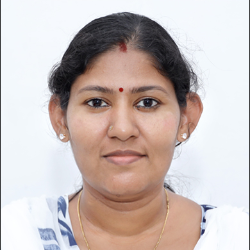To familiarize the fundamental concepts of fluid mechanics and hydraulics in pipes and open channels, pressure measurement and flow measurement systems
Curriculum
- 4 Sections
- 15 Lessons
- 10 Weeks
Expand all sectionsCollapse all sections
- Module 1To understand the basic properties of fluids and Measurement of pressure4
- 1.1Fluid properties,
- 1.2Newton’s law of viscosity, types of fluids
- 1.3Fluid Statics: Fluid pressure, Pascal’s Law, Hydrostatic law
- 1.4Measurement of fluid pressure using manometers -Simple manometer (Piezo meter and U tube manometers) and Differential manometers (U tube differential manometer and inverted U tube differential manometer)
- Module 2To evaluate the stability of floating and submerged bodies2
- 2.1Determination of total pressure and centre of pressure on surfaces
- 2.2Buoyancy and Floatation: Basic concepts, centre of buoyancy, meta-centre and meta-centric height of floating bodies, determination of meta -centric height using analytical and experimental method – conditions for stability of floating and submerged bodies
- Module 3This module introduces the fundamentals of fluid kinematics and dynamics, including methods of describing fluid motion, velocity and acceleration analysis, and flow visualization techniques. It also covers Bernoulli’s and momentum equations with practical applications such as Venturimeter, orifice meter, Pitot tube, and pipe bends.5
- 3.1Fluid Kinematics: Methods of describing fluid motion, Lagrangian and Eulerian methods.
- 3.2types of fluid flow, continuity equation in one, two and three dimensions
- 3.3Determination of velocity and acceleration at a point in fluid flow , Description of streamline, pathline and streakline,velocity potential, stream function and flow net
- 3.4Fluid dynamics: Forces in fluid motion, Derivation of Bernoulli’s equation from Eulers’s equation of motion with assumptions,
- 3.5Practical Applications of Bernoulli’s equation- Venturimeter, orifice meter and Pitot tube , Momentum equations and forces on Pipe bends
- Module 4This course module covers the principles of fluid flow through orifices, pipes, open channels, and notches/weirs, emphasizing hydraulic coefficients, energy losses, and discharge calculations. It includes theoretical concepts, derivations, and numerical problem-solving relevant to practical hydraulic engineering applications.4
- 4.1Flow through Orifices: hydraulic coefficients and experimental determination of hydraulic coefficients. Discharge through large orifices- rectangular orifice (discharging freely, fully submerged and partially submerged), time of emptying of a rectangular tank through an orifice at its bottom
- 4.2Flow through Notches and weirs: classification of notches and weirs, discharge over a rectangular notch/weir, discharge over a triangular notch/weir, discharge over a trapezoidal notch/weir, velocity of approach and end contraction
- 4.3Flow in Open channel: Comparison between pipe flow and open channel flow, classification of flow in open channels
- 4.4Pipe flow- Computation of major losses in pipes (derivation of Darcy Weisbach equation) – Computation of minor losses in pipes (equations only) , hydraulic gradient line and total energy line, pipes in series and parallel -equivalent pipes.

